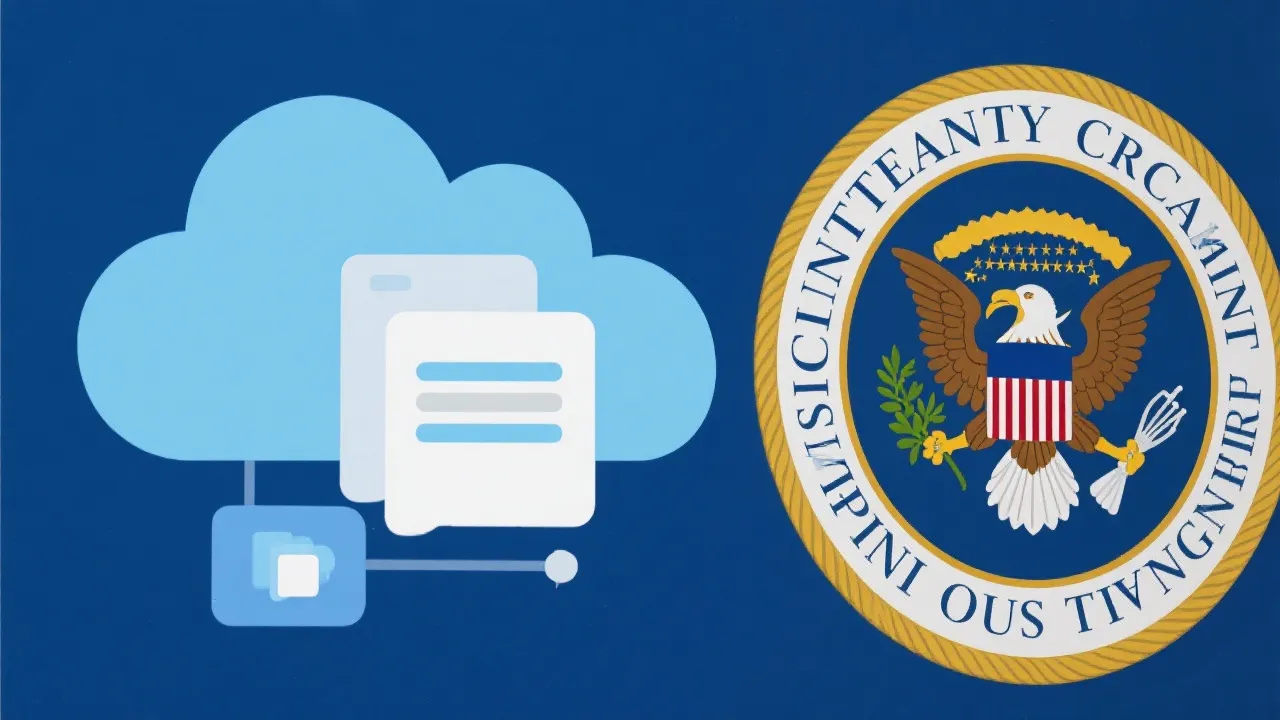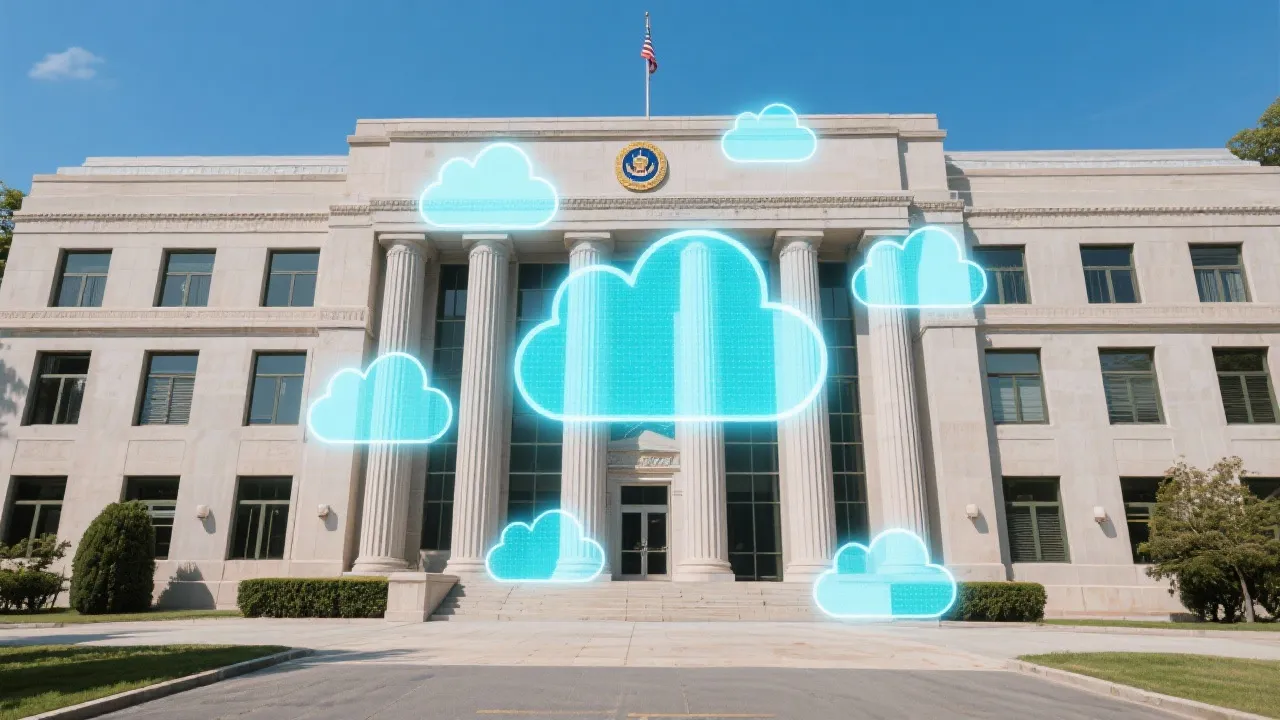Cloud Storage Strategies for Government Agencies
Governments are adopting cloud storage as a scalable, cost-effective way to modernize IT systems and improve public services. This guide explores the advantages, security concerns, and implementation strategies, offering valuable insights for effectively choosing and incorporating cloud storage solutions. It emphasizes the importance of meeting regulatory compliance and enhancing inter-agency cooperation.

Introduction to Cloud Storage in Governance
Public sector bodies are increasingly opting for cloud-based storage solutions to revamp their IT systems and boost service delivery. This shift offers flexibility, scalability, and affordability in handling vast data volumes, from public records to essential infrastructure details. Transitioning from traditional isolated data centers to centralized systems, cloud solutions enable agencies to pay only for their actual storage use. Additionally, cloud vendors provide robust security measures, often beyond the capabilities of individual entities, ensuring both protection and compliance. Adopting cloud systems also encourages collaboration across agencies, supporting seamless data exchange and fostering integrated public service delivery.
The evolution towards cloud storage stems from the growing needs of modern governance, where data management has become an increasingly critical component of public service efficiency. The digitalization of data has led to an explosion in the volume of information that governments must manage. Consequently, traditional IT infrastructures are becoming less viable, prompting many agencies to explore cloud-based alternatives. As governments seek to enhance transparency, improve service delivery, and ensure data security, the integration of cloud storage solutions plays a pivotal role in reshaping governance.
Understanding Cloud Storage Models
When discussing cloud storage, it is important to understand the various models available, each with distinct characteristics and suitability based on governmental needs. The three primary models are public, private, and hybrid cloud solutions.
Public Cloud
The public cloud involves services offered over the internet by third-party providers. These services are typically accessible to any organization or individual willing to pay for access. For government entities, public cloud solutions can provide significant cost savings, as they eliminate the need for maintaining physical hardware and infrastructure. Major public cloud providers, such as Amazon Web Services (AWS), Microsoft Azure, and Google Cloud, offer a range of storage solutions that can be tailored to meet the specific needs of government agencies. However, concerns regarding data sovereignty and security can limit the full adoption of public cloud services in sensitive government operations.
Private Cloud
A private cloud is a dedicated environment specifically designed for a single organization. This model offers greater control over data and enhanced security, making it an attractive option for governments handling sensitive information. With a private cloud, agencies can customize the infrastructure to meet their specific security and compliance needs. Although private clouds can require higher initial investments due to the need for dedicated resources, the long-term benefits of increased security and governance may justify the cost.
Hybrid Cloud
The hybrid cloud model combines elements of both public and private clouds, allowing agencies to benefit from the strengths of both environments. This model enables governments to store sensitive data in a private cloud while leveraging the scalability and cost-effectiveness of the public cloud for less critical applications. A hybrid approach offers flexibility, as agencies can move workloads between environments as needed, which can lead to efficient resource allocation and improved service delivery.
Advantages and Considerations for Cloud Storage in Government
Cloud storage presents numerous benefits for governmental use. It is highly scalable, allowing swift adaptation to evolving storage needs without substantial upfront costs. Enhanced security measures, including encryption and access controls, protect government data. The cost-effective pay-as-you-go model eliminates hefty hardware and maintenance expenses, allowing reallocation of resources. Cloud solutions also offer improved disaster recovery with reliable data backup and redundancy, ensuring continuity during unexpected events. Lastly, using cloud storage enhances inter-agency collaboration and data sharing, leading to harmonized and efficient public service operations.
Cost Efficiency
One of the most compelling advantages of cloud storage is its cost efficiency. Traditional data storage methods often require significant capital investments in hardware and software. Additionally, ongoing maintenance, upgrades, and energy costs can add further to the burden. In contrast, cloud solutions operate on a pay-as-you-go model that allows governments to only pay for the storage they need. This reduces financial strain and enables agencies to allocate funds more effectively.
Scalability
The scalability of cloud storage solutions empowers governments to easily expand their storage capacities in response to growing data demands. This is particularly important for public sector organizations that may experience fluctuations in data volume due to legislative changes, population growth, or the implementation of new services. Cloud providers facilitate this scalability, allowing agencies to increase or decrease their storage capabilities without the lead times typically associated with traditional IT infrastructure.
Collaboration and Data Sharing
Cloud storage enhances collaboration among agency departments, fostering a more integrated approach to public service delivery. By providing a centralized platform for data storage and access, agencies can streamline communication, improve response times, and eliminate silos. This inter-agency collaboration is vital for comprehensive public service delivery, particularly in times of crisis when coordinated efforts are essential.
Improved Disaster Recovery
Disaster recovery is another significant advantage of cloud storage. In the event of data loss due to natural disasters, cyber-attacks, or unexpected system failures, cloud solutions offer reliable backup and data redundancy options. Many cloud providers implement data replication across multiple geographic locations, ensuring that critical government information is preserved and can be quickly restored when needed. This capability allows for uninterrupted service and enhances public trust in government operations.
Security Concerns
Despite the myriad benefits of cloud storage, security remains a primary concern for government entities. Cloud service providers implement advanced security measures, including encryption, access controls, and regular security audits, to protect sensitive data. However, governments must conduct thorough due diligence when selecting a cloud vendor, ensuring that they comply with relevant healthcare, financial, and data protection regulations. Agencies should also develop comprehensive security strategies that include employee training, regular updates, and vulnerability assessments to safeguard against potential threats.
Implementing Cloud Storage Solutions in Government
Introducing cloud storage within governmental organizations requires thoughtful strategic planning. Agencies need to evaluate their unique storage demands, security needs, and compliance obligations. Choosing the right type of cloud model—public, private, or hybrid—is crucial for performance optimization and security. The data transfer process is intricate and necessitates precision to maintain data integrity and minimal interruptions. Integrating cloud solutions with existing IT infrastructure demands comprehensive integration testing and possible system updates. Continued management and monitoring are essential to uphold performance, security measures, and cost-effectiveness. Regular security audits and compliance checks are necessary to address vulnerabilities, and training staff in using cloud platforms is key to a successful transition.
Developing a Cloud Strategy
The first step in successfully implementing cloud storage solutions is to develop a comprehensive cloud strategy. This requires a thorough assessment of current IT infrastructure, defining specific storage needs, and identifying the type of cloud services best suited for the agency's unique requirements. A clear strategy will guide decision-making and provide a roadmap for the migration process, ensuring that all stakeholders are aligned and informed.
Data Migration Planning
Data migration is one of the most critical aspects of transitioning to cloud storage. Agencies must create a detailed migration plan that outlines how data will be transferred to the cloud while minimizing disruptions to ongoing operations. This may involve categorizing data, determining which files to move first, and employing tools for secure data transfer. Additionally, testing the migration process on smaller datasets can identify potential challenges before a full-scale implementation.
Integration with Existing Systems
To leverage the full potential of cloud storage, agencies need to ensure that their cloud solutions integrate seamlessly with existing systems and applications. This can require API connections, middleware solutions, and potentially restructuring certain software architectures. Conducting thorough integration testing is essential to uncover compatibility issues and provide a smooth experience for end-users. Furthermore, agencies should document integration processes to maintain clarity and support ongoing updates.
Training and Change Management
Implementing cloud storage requires not only technological changes but also significant adjustments in organizational workflows. Comprehensive staff training is vital to ensure that employees can effectively use new cloud solutions. This training should cover aspects such as data security practices, access protocols, and collaboration tools. Moreover, fostering a culture of change management helps staff adapt to new processes and enhances overall buy-in for the cloud strategy.
Regulatory Compliance and Data Governance
Government entities must navigate complex regulatory landscapes when implementing cloud storage solutions. Compliance with data protection laws such as the General Data Protection Regulation (GDPR) and industry-specific regulations is crucial for ensuring that sensitive information is handled appropriately. Agencies must work closely with cloud vendors to verify their compliance certifications, such as ISO certifications, and ensure that contracts outline responsibilities and liabilities regarding data governance.
Establishing Data Governance Frameworks
Effective data governance frameworks are essential to manage the myriad challenges of compliance and data protection in the cloud environment. A well-defined governance framework outlines data ownership, accountability, classification, access controls, and data lifecycle management. This framework should also include regular reviews and audits to ensure that all processes align with evolving regulations and best practices. Establishing a dedicated data governance team may facilitate more effective oversight and compliance management.
Security and Risk Management
Implementing cloud storage necessitates a proactive approach to security and risk management. While cloud providers typically implement robust security measures, government agencies must also take responsibility for securing their data in the cloud. This includes employing encryption for data both at rest and in transit, implementing strict access controls, and employing multi-factor authentication mechanisms. Additionally, regular vulnerability assessments and penetration testing are crucial for identifying any weaknesses in security protocols.
Future Trends in Cloud Storage for Government
The landscape of cloud storage in governance continues to evolve, driven by rapid advancements in technology and changing public expectations. Understanding these trends can help agencies stay ahead of the curve and optimize their cloud implementations.
Artificial Intelligence and Cloud Integration
The integration of artificial intelligence (AI) into cloud storage solutions is transforming how data is managed and analyzed in government. AI capabilities can automate data organization, enhance predictive analytics, and improve compliance monitoring. By leveraging AI, agencies can derive actionable insights from vast datasets, supporting more informed decision-making and smarter public service delivery.
Stronger Emphasis on Data Privacy
As data privacy concerns grow globally, government agencies are increasingly prioritizing data governance to protect citizen information. In response to public demand for transparency and responsible data practices, agencies must adopt robust policies that prioritize data privacy. The introduction of stronger data privacy laws may further shape cloud storage practices, prompting agencies to reevaluate their storage and data management strategies.
Multi-Cloud Strategies
Many organizations are adopting multi-cloud strategies, utilizing services from multiple cloud providers. This approach offers enhanced flexibility, vendor diversity, and reduced risk of service disruption. For governments, multi-cloud strategies can provide a way to optimize costs while ensuring that sensitive data is stored in the most secure environment. By exploring partnerships with various cloud providers, agencies can improve their resilience and adaptability to changing data needs.
Conclusion
To effectively implement cloud storage, government entities must address unique security and regulatory requirements. Properly assessing agency needs and understanding vendor capabilities and certifications is crucial. Ultimately, selecting competent cloud solutions empowers agencies by enhancing data management, scalability, and cost benefits.
In conclusion, the transition to cloud storage presents an essential opportunity for modernizing governance. As public sector organizations continue to navigate the complexities of data management, embracing cloud storage solutions will facilitate improved service delivery, inter-agency collaboration, and responsive governance. Through careful planning, investment in security, and ongoing personnel training, government entities can unlock the full potential of cloud storage, ensuring they remain agile and effective in an increasingly digital world.




